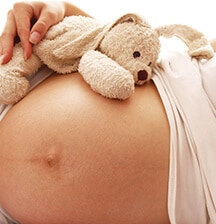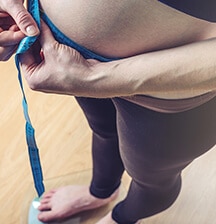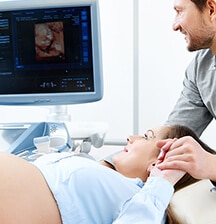
You’ve heard of probiotics, right? Jessica Giljam-Brown explains why they’re good for mums and their babies.
The “father of medicine”, Hippocrates, stated that “All disease begins in the gut.” For many decades, modern science largely ignored this theory, but times are changing and now gut health and probiotic supplements are a priority in health research and product development. It is logical that our digestive system is critical for our health, as it is how we absorb the majority of our nutrients and energy which keep us alive and healthy. While the function of our gut organs are of great importance, it is the presence of bacteria in the gut that play an even bigger role in our health.
THE GUTS OF IT
An adult digestive tract can contain up to two kilograms of bacteria, and over 1,000 different species. Gut bacteria are vital to our survival, as these bacteria carry out digestive functions such as breaking down indigestible forms of fibre and producing important vitamins. Bacteria also play a role in our immune function. Not only do “good” bacteria help to keep “bad” bacteria from overpopulating the gut, but theyalso support the immune system by communicating with the cells in the gut lining to tell them when to activate their defences against a pathogen. “Probiotic” is the term given to bacteria which are believed to be beneficial for human health, and have become an important tool in the prevention and treatment of conditions for both mum and baby. It is important to understand that the human body is covered in bacteria, and they are not just confined to the gut. Bacteria are present on our skin, in our digestive tract – from our mouth to anus, and in the vaginal canal. The uterus, placenta, and breast milk were once thought of as sterile (completely free of bacteria); however, it is now known that these also contain colonies of bacteria.
BACTERIA AND BABIES
A baby receives the majority of its bacteria from the mother, a process which begins very early on in life. During the second trimester, the baby will start swallowing small amounts of the amniotic fluid inside the placenta, and this bacteria will begin to populate the gut. Babies born vaginally will pick up a range of different bacteria on the way out of the birth canal, while babies born by Caesarean section won’t. It is known that the bacteria profile of babies born via C-section section is vastly different to those born vaginally. An ongoing source of bacteria for babies is from breast milk and skin-to-skin contact. Breast milk provides baby with natural probiotics which can vary month to month depending on the bacteria present in the mother. Skin-to-skin contact has wonderful benefits for babies, and one of these is the transference of bacteria from your skin to their skin.
PROBIOTICS IN PREGNANCY
Probiotics in pregnancy have been shown to have a range of benefits for both the mother and the baby. Various forms of bacteria have been shown to improve iron absorption in the mother by as much as 50%; reduce the risk of preeclampsia by up to 39% and premature birth by 27%; and reduce the risk of allergies, eczema, asthma, and other immune response-related diseases in the baby. Continuing the use of probiotics after pregnancy and during breastfeeding is beneficial. Not only will it ensure that beneficial strains of bacteria are being passed onto the baby through the breast milk, but certain strains of probiotics have been found to aid in weight loss and prevent mastitis. Probiotic use in women who are pregnant, breastfeeding, or trying to conceive is to be encouraged, as it is a safe way to provide the body with beneficial organisms in order to lower disease risk factors.
How was your baby born?
If a baby is born vaginally, is breastfed, and is healthy, then there is no need for external probiotics, as he will be getting everything he needs from his mother. If your baby was born via C-section section or is formula-fed, it may be beneficial to give additional probiotics. These babies have very different gut bacteria profiles to those who are born vaginally and breastfed. It is unknown as yet how these differences in gut bacteria affect the health of the child later in life. Using probiotics in infants is a low-risk insurance policy to ensure they have adequate levels of beneficial bacteria present in their gut. Formula-fed babies will often benefit from probiotics if they experience firm stools or constipation, the use of Lactobacillus reuteri can help soften stools and prevent constipation.
Tell me about…Vaginal swabbing
Vaginal swabbing or “seeding” is a practice that has emerged recently as a way to transfer bacteria from the vaginal canal to a baby which has been born via Caesarean section. In theory this sounds like a good idea; however, it is not recommended due to the risk of passing on harmful bacteria or viruses to the baby such as strep B or Herpes simplex.
Things to think about
As much as it is important to provide both mother and baby with beneficial bacteria it is just as important to avoid substances which can damage the delicate balance of the gut ecosystem. High sugar intake, excessive antibiotic use, the oral contraceptive pill, painkillers, pesticides, and over-cleaning your home can cause a disruption in your and your baby’s gut bacteria. When choosing a probiotic supplement, choose one that contains a minimum of three different strains of bacteria which have been proven to be beneficial. Your supplement should be refrigerated to help keep the bacteria alive (remember, these are living organisms!), and the probiotic should state that it is packaged in such a way that allows for the bacteria to survive the stomach acid and reach the intestines where they will be of most benefit. As well as using a probiotic supplement, you can consume probiotic-rich foods. Natural yoghurt, sauerkraut, kimchi, keifer, and miso are good sources of natural probiotics. Buy these foods from reputable manufacturers who test the bacteria present in the food, and avoid homemade versions which can unintentionally contain harmful bacteria.
JESSICA GILJAM-BROWN IS A QUALIFIED NUTRITIONIST, AND TAKES A HOLISTIC APPROACH TO HEALTH AND WELLBEING. SHE IS PASSIONATE ABOUT HELPING PEOPLE TO DISCOVER HOW AMAZING THEIR BODIES ARE DESIGNED TO FEEL WHEN POWERED BY THE RIGHT NUTRIENTS. LEARN MORE AT WELLNESSBYJESSICA.COM








